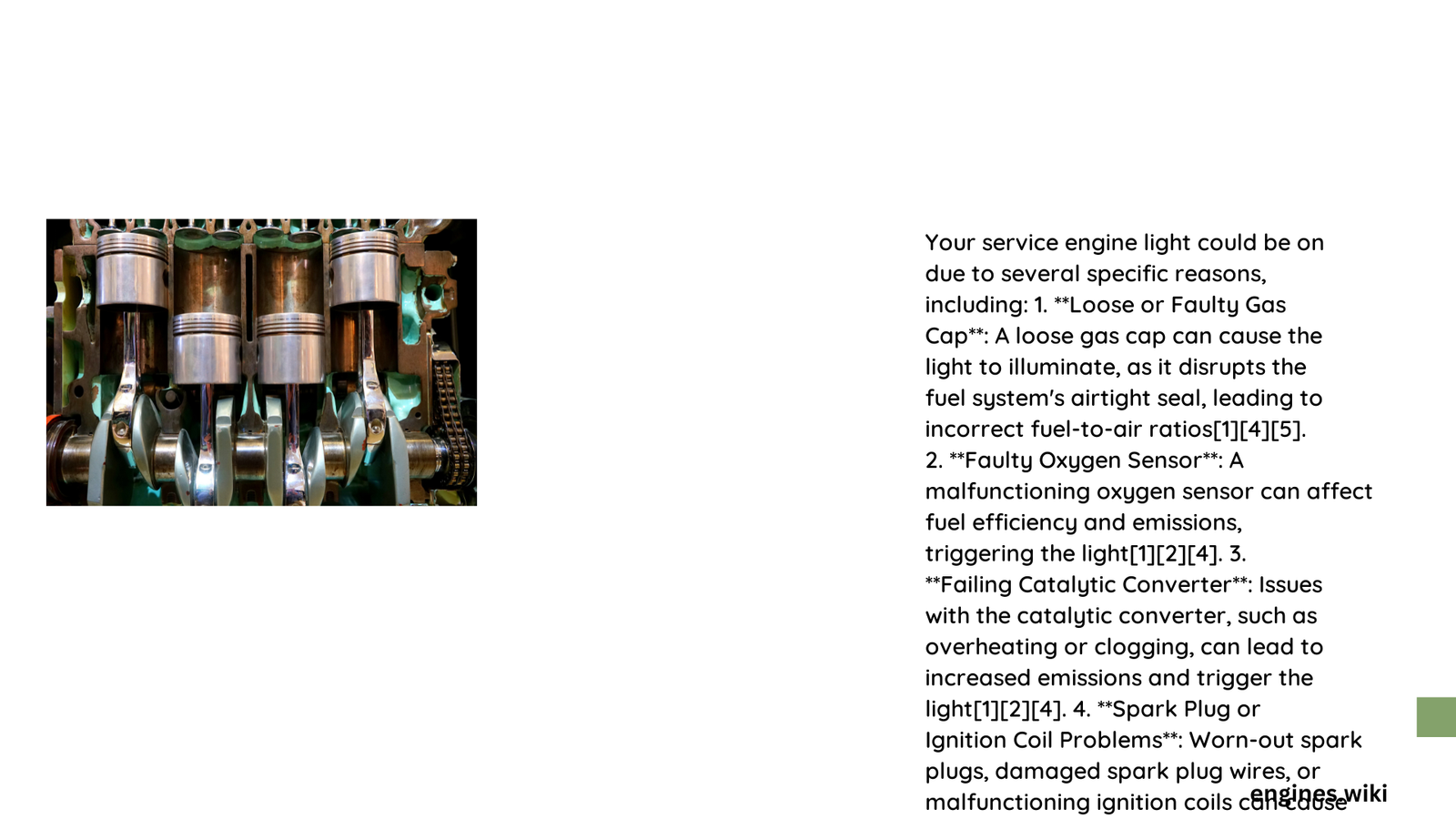When your vehicle’s service engine light illuminates, it’s a critical signal that something requires immediate attention in your car’s complex mechanical system. Modern vehicles are equipped with sophisticated onboard diagnostic systems that monitor numerous engine components, triggering warning lights when potential problems are detected. Understanding these signals can help you prevent costly repairs, maintain vehicle performance, and ensure your safety on the road.
What Triggers the Service Engine Light?
Why Do Oxygen Sensors Cause Warning Lights?
Oxygen sensors play a crucial role in monitoring exhaust gases and maintaining optimal fuel-air mixture. When these sensors malfunction, they can trigger diagnostic trouble codes (DTCs) that illuminate the service engine light.
Key Oxygen Sensor Indicators
- DTCs Range: P0130 to P0167
- Performance Impact:
- Reduced fuel efficiency
- Poor engine performance
- Increased emissions
| Sensor Issue | Potential Symptoms | Estimated Repair Cost |
|---|---|---|
| Circuit Malfunction | Rough idling | $200 – $500 |
| Low Voltage | Engine misfires | $250 – $600 |
| Complete Failure | Significant power loss | $300 – $700 |
What Causes Catalytic Converter Problems?
Catalytic converters are critical emissions control components that transform harmful exhaust gases into less dangerous substances. Their failure can trigger service engine lights through specific diagnostic codes.
Catalytic Converter Warning Signs
- Primary DTCs: P0420 and P0430
- Potential Causes:
- Failing oxygen sensors
- Exhaust system leaks
- Internal converter damage
- Poor engine maintenance
How Do Mass Airflow Sensors Impact Engine Performance?
Mass airflow sensors measure the volume and density of air entering the engine, crucial for maintaining proper fuel-air mixture. Their malfunction can cause significant performance issues.
Mass Airflow Sensor Characteristics
- Diagnostic Codes: P0100 to P0104
- Performance Consequences:
- Irregular engine idling
- Decreased fuel economy
- Potential engine stalling
What Are Common Maintenance-Related Triggers?
Regular vehicle maintenance can prevent many service engine light activations. Understanding recommended service intervals is crucial for preventing unexpected warnings.
Maintenance Checklist
- Oil Changes: Every 5,000-7,500 miles
- Spark Plug Replacement: Every 30,000-100,000 miles
- Air Filter Inspection: Every 15,000-30,000 miles
Diagnostic and Repair Recommendations

Should You Immediately Stop Driving?
While not every service engine light indicates an emergency, certain symptoms warrant immediate attention:
– Significant power loss
– Strange engine noises
– Visible smoke from exhaust
– Unusual vibrations
How to Proceed with Diagnostics?
- Use an OBD-II scanner to read specific trouble codes
- Document the exact code for accurate diagnosis
- Consult a professional mechanic
- Address issues promptly to prevent further damage
Cost Considerations
What Are Potential Repair Expenses?
- Minor sensor replacements: $100 – $300
- Catalytic converter replacement: $500 – $2,000
- Complex engine repairs: $1,000 – $4,000
Pro Tips for Prevention
- Perform regular maintenance
- Use high-quality fuel
- Address warning signs immediately
- Keep detailed service records
Note: While this guide provides comprehensive insights, individual vehicle issues can vary. Always consult a certified automotive professional for precise diagnostics.
